RECURVATA Carruthers, 1974 (engl./ fr.)
Synonym : Echeveria multicolor Uhl (1992) (nom. illeg., Art. 52.1).
Series Nudae
Type : Carruthers 106. Venezuela, Mérida, above Apartaderos and village of Barro Negro, on SE facing dry slope off the Transandian Highway near Pico El Aguila, 3400 - 3500 m. 1973.
Etymology : Named for the recurved leaves of the plants from the type locality.
Distribution : Venezuela (State of Mérida).
First description by Carruthers in Bulletin of the African Succulent Plant Society 9: 50-56, ill., 1974 :
Glabrous, with evident if short stem, not or sparingly branching.
Leaves to 50 or more, erect at first, then spreading and at last recurved, obovate, 8 cm long to 5 cm broad when older, narrowed to 15 mm at base, 4 mm thick near middle, at first shallowly concave becoming recurved and convex, slightly keeled near tip on lower surface, mucro short, rarly somewhat reddish. Colour : Leaves dark apple green, but strongly pruinose hence a pale medic blue-green.
Flowers : Not known.
A more complete description (as E. multicolor) by Uhl In Cactus and Succulent Journal US 64(3): 120-124. 1992 :
Mostly acaulescent, but some populations with vegetative stems up to 15 cm tall, sometimes branched or with offsets at base.
Rosettes of 15 to 40 mostly ovate to lanceolate, occasionally oblanceolate leaves, 40 - 50 (-90) mm long, 15 - 25 mm wide, 3 - 4 mm thick, 10 mm wide at base, some with 1 mm mucro, usually more or less straight, but in one population becoming recurved as much as 90 degrees at maturity, usually shallowly concave or grooved above, in most plants very glaucous and pale blue, but olive to dark brown in others, with many intermediate, and some with narrow pale margins.
Floral stem a raceme 25 - 60 cm tall, the axis becoming reddish to bright glaucous pink upward, bearing 15 - 40 rather crowded flowers, the upper progressively smaller. Sterile bracts up to 15 - 30 mm long, 10 - 15 mm wide, with spur 2 - 3 mm wide and 1 - 2 mm long at base, colored as the leaves, the upper smaller. Fertile bracts curving upward in distal half, with the tips often crowded to one side of the subtended flower, with 2 - 4 mm spur. Pedicels 1 - 4 mm long, each with 2 narrow bracteoles 3 - 8 mm long.
Flowers commonly attached to the axis 3 - 6 (-14) mm above their subtending bracts, with a low ridge extending down to the bract, at anthesis pointed out horizontally or downward by as much as 30 degrees. Sepals erect, clasping the corolla, ovate to lanceolate, more or less equal, 4 - 8 mm long. Corolla rather gibbous, 8 - 13 mm long, 5 - 7 mm wide, tips spreading 4 - 6 mm apart, bright to dull yellow or pale orange, flushed with a little red in exposed areas outside. Stamens and pistils appressed, included within the corolla. Styles and stigmas green or becoming reddish.
Flowering time : July and August.
Cytology : n = 21.
Link to a summary of the above description in English and French.
Note
(taken from Ch. Uhl : Notes on Echeveria in Venezuela, II, in Cactus and Succulent Journal US 64: 120-124. 1992) :
This suggests that the name "recurvata" has been given to an extreme form and is in fact not really appropriate for the species as a whole.
2. Plants below Mucuchíes and west and downwards from there have decidedly less brilliantly coloured flowers and more and more brownish leaves. Carruthers intended to publish them as a new species (Echeveria meridaensis) but evidently this has never happened. In fact this is not really regrettable because in cultivation blue-leaved and brown-leaved plants after a year cannot be distinguished any longer. In any case colours in cultivated plants are much less striking than in habitat.
3. Main difference between E. recurvata and E. bicolor : All the diverse vegetative forms of the former "have flowers with erect, clasping sepals, and in this character they differ consistently from the spreading sepals in the many forms of E. bicolor. Also the flowers are generally more crowded than those of E. bicolor, and they tend to point down at a low angle below the horizontal."
4. A variant form of the region of Pico Bolivar, called Form #4, is included in E. recurvata.
5. E. recurvata has been offered twice, first in
- 1990 as ISI 90-55, Echeveria recurvata (HBG 48447 / U2743) and in
- 1991: ISI 91-42, misidentified as Echeveria bicolor, (HBG 48444 / U2737) is also E. recurvata.
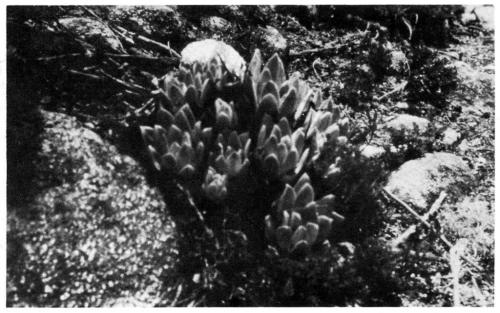
Echeveria recurvata Carruthers (1974) prot., Bull.Afr.Succ.Pl.Soc.9(2)p.53.
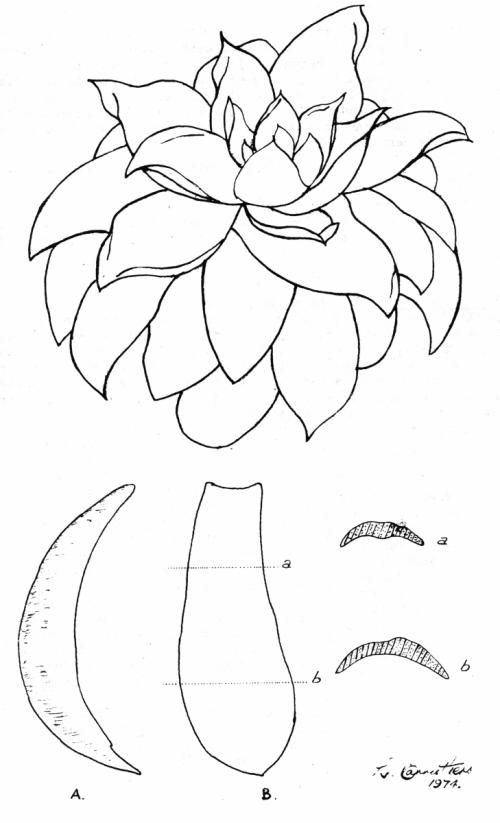
Echeveria recurvata Carruthers (1974) prot., Bull.Afr.Succ.Pl.Soc. 9(2) p.55
Habitat of E. recurvata :
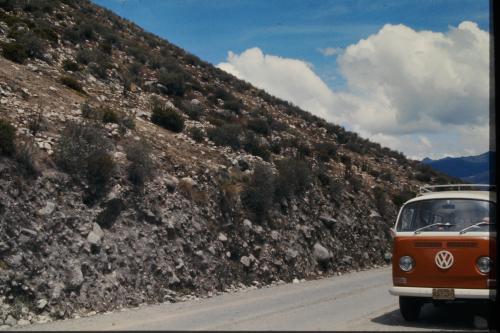
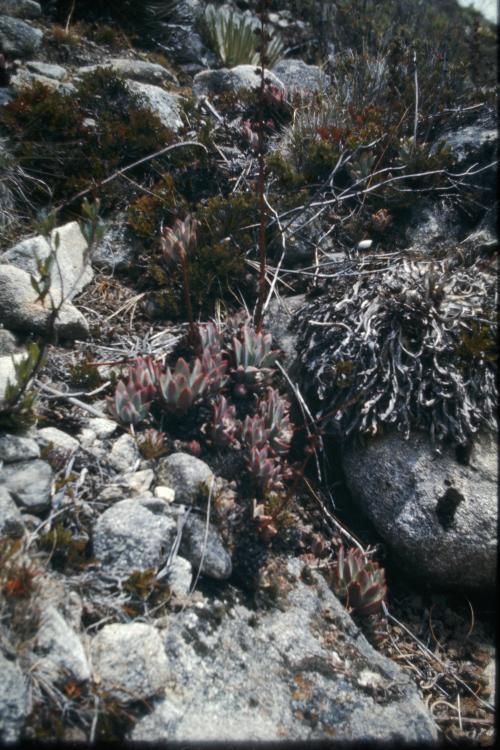
Photos L. Carruthers
Plants in cultivation :
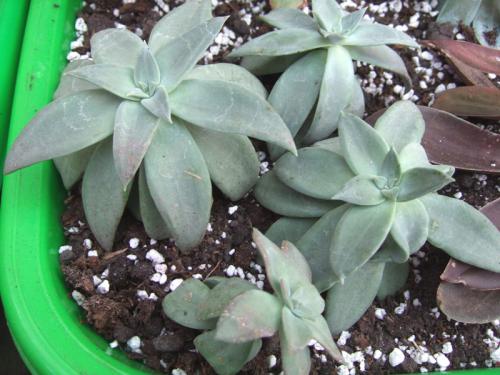
Photo Ed Dunin-Wasowicz
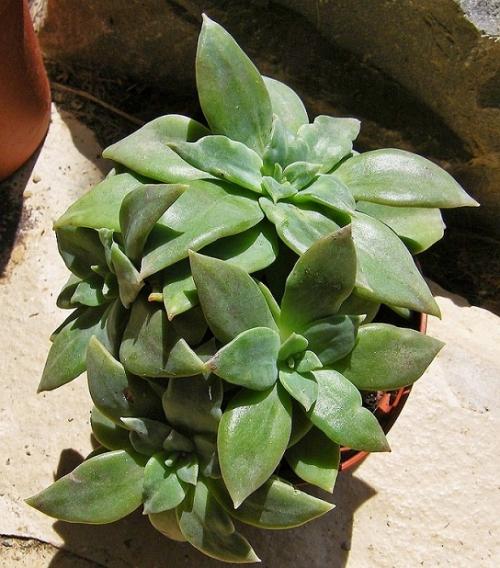
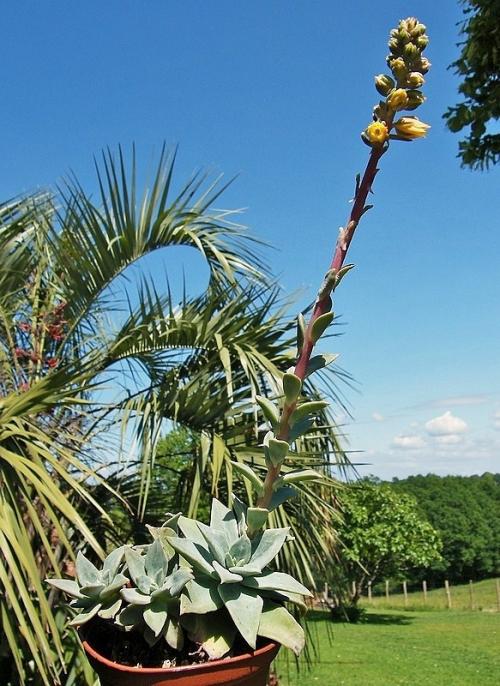
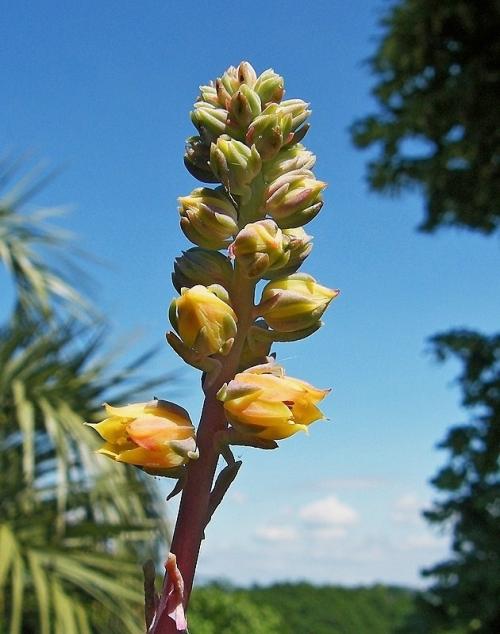
E. recurvata, ISI 90-55.
Photos Emmanuelle Aubé
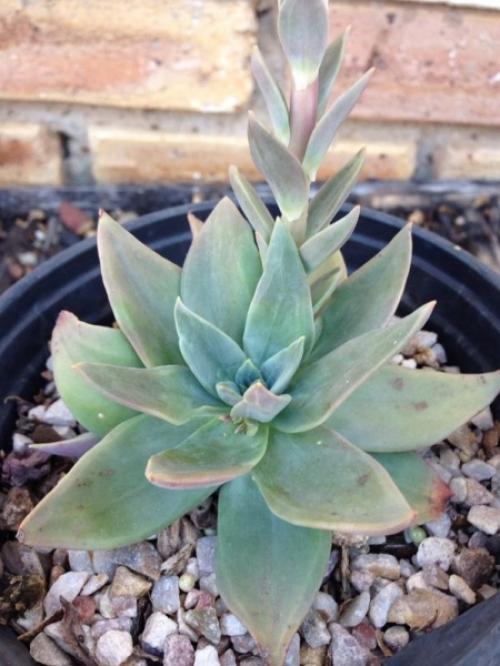
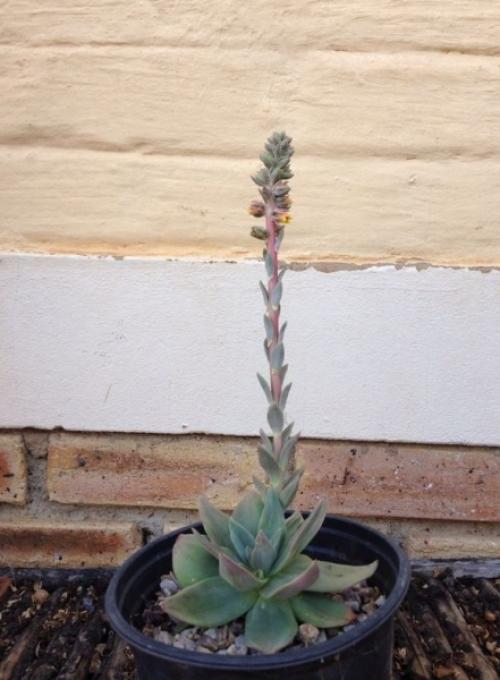
Photos James Barry Slabert